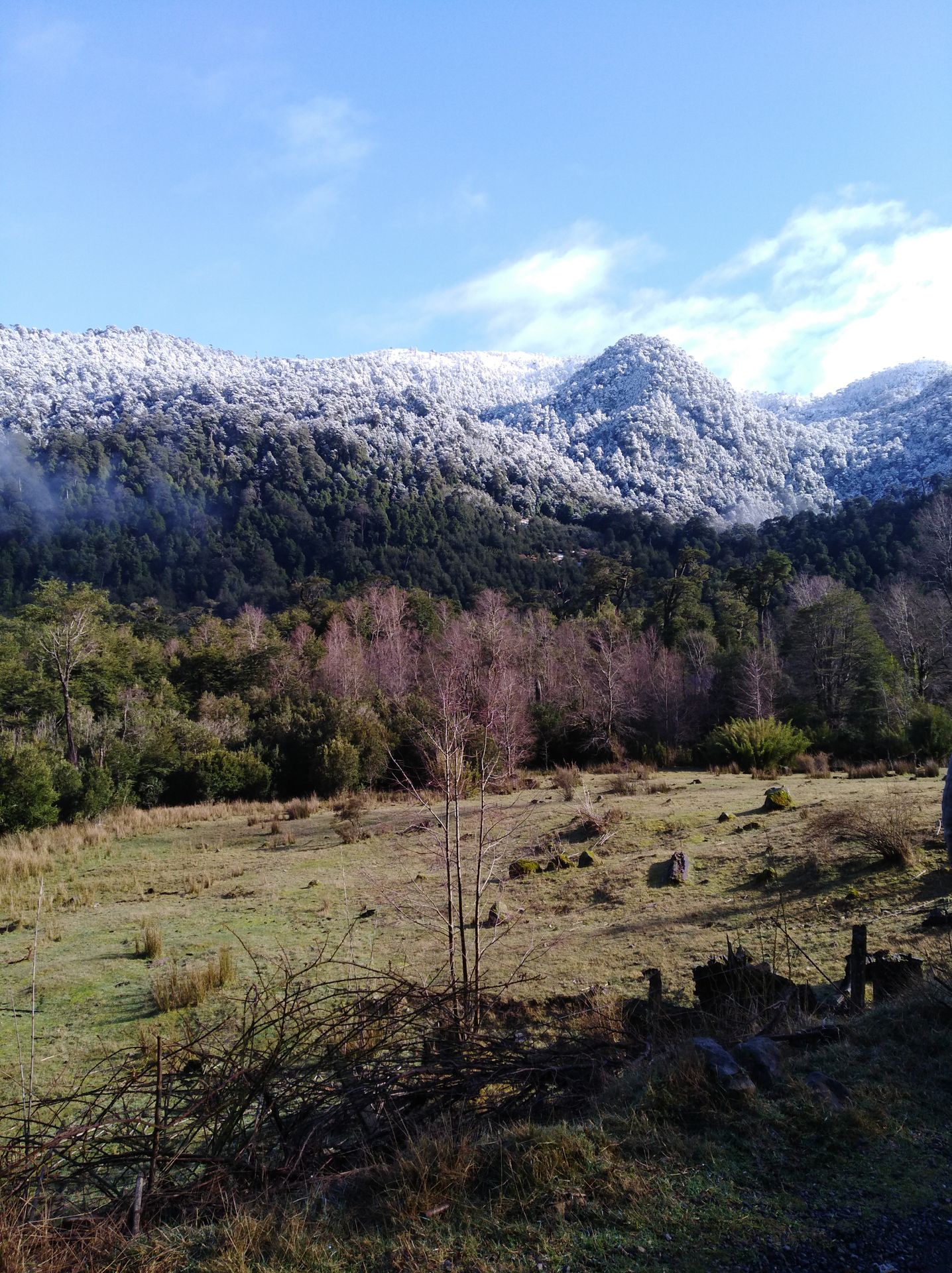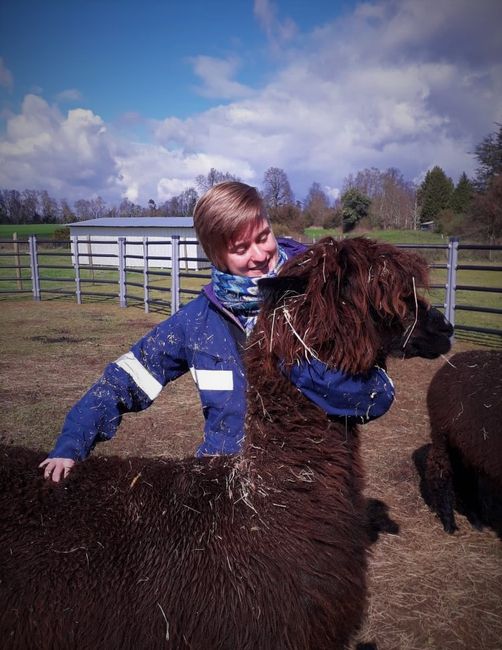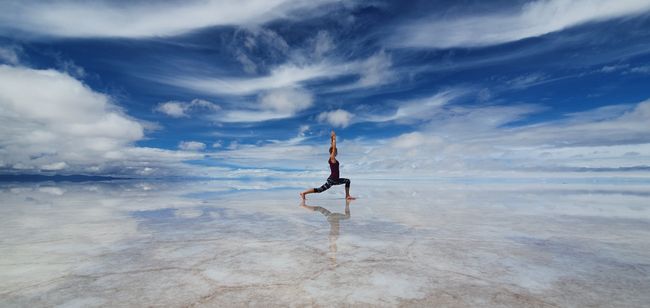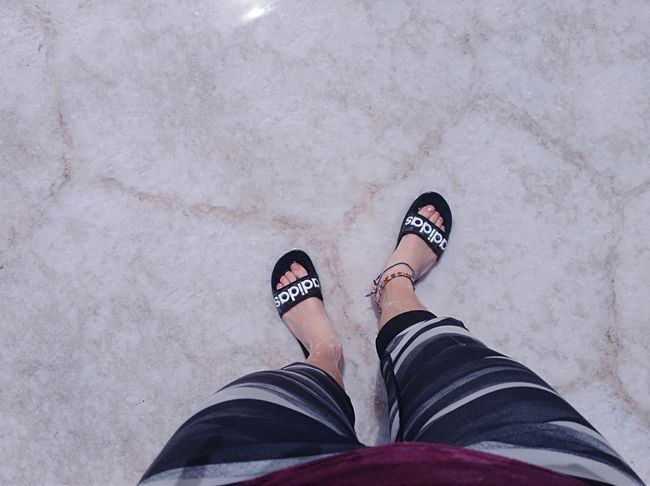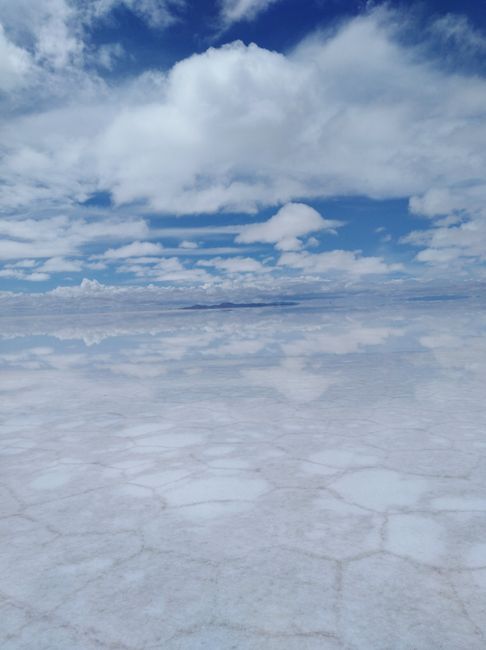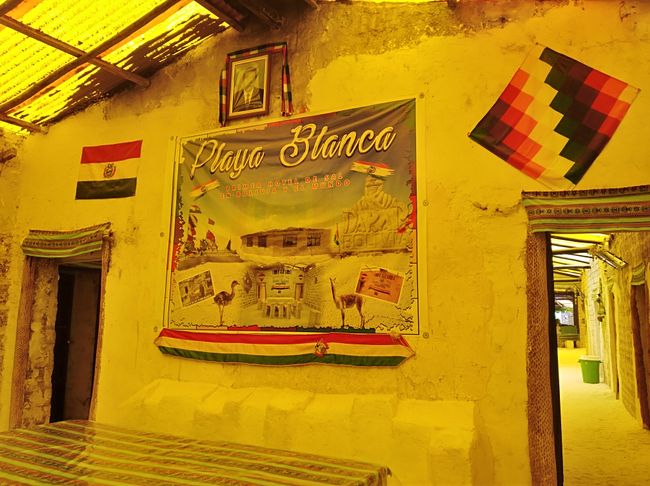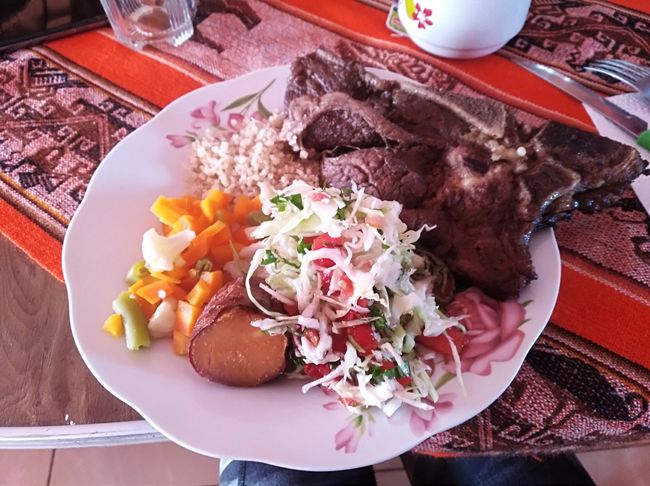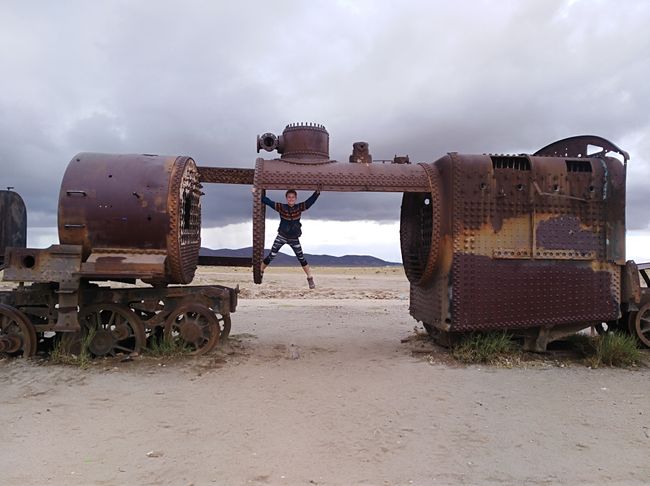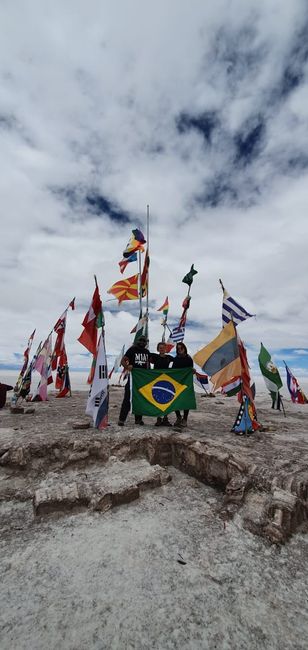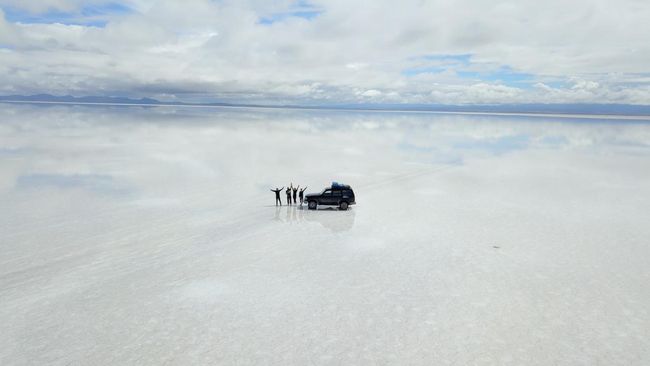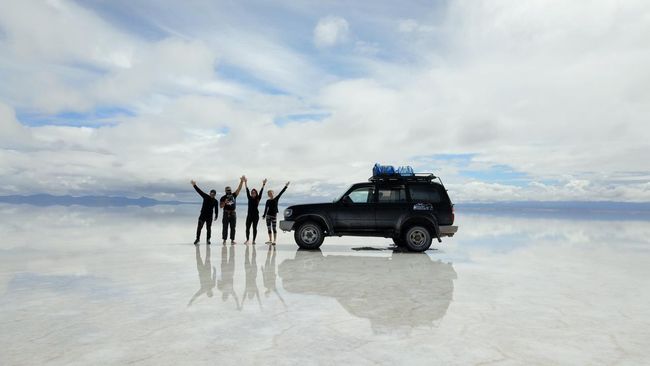Roadtrip Salar de Uyuni - Part 3
प्रकाशित: 22.01.2020
समाचार पत्रिका के लिए सदस्यता लें
4:30 headache and stomach ache, I absolutely don't feel like it. For breakfast, it's sweet again. Some kind of cake with the usual spreads or sweetened yogurt with cornflakes. Not that I'm not hungry at 5, but it tastes good and I know that there won't be anything for a while afterwards, but I feel nauseous afterwards. Plus, it's raining, who would have expected that during the rainy season.
Three layers on my body because it's only 5 degrees Celsius, into the jeep because we want to be on time in the 'Salar de Uyuni'. The 'Salar de Uyuni' is the largest salt flat in the world and covers an area of 12,000 square kilometers. There is no life on it because of the high mineral content, only some flamingos breed there. From June to December, the desert is dry and looks like a white snow landscape. In December, the rainy season begins, and some salt flats are ankle-deep with water. It can't drain because the salt crust seals the ground. With the jeep, we can drive through the saltwater, even though it has to be cleaned immediately afterwards so that nothing rusts in the gearbox. Today, the salt flat is mainly used for lithium mining, which is abundant. President Evo Morales pushed this project forward. Unfortunately, the lithium in Bolivia cannot be purified for use in the technology industry.
So now, here I am in my Adidas shoes, flip flops at half past 5 in the morning in 5 degrees cold saltwater in the middle of South America. Sometimes I wonder why. (We were advised not to go into the desert with hiking shoes because the saltwater destroys everything.)
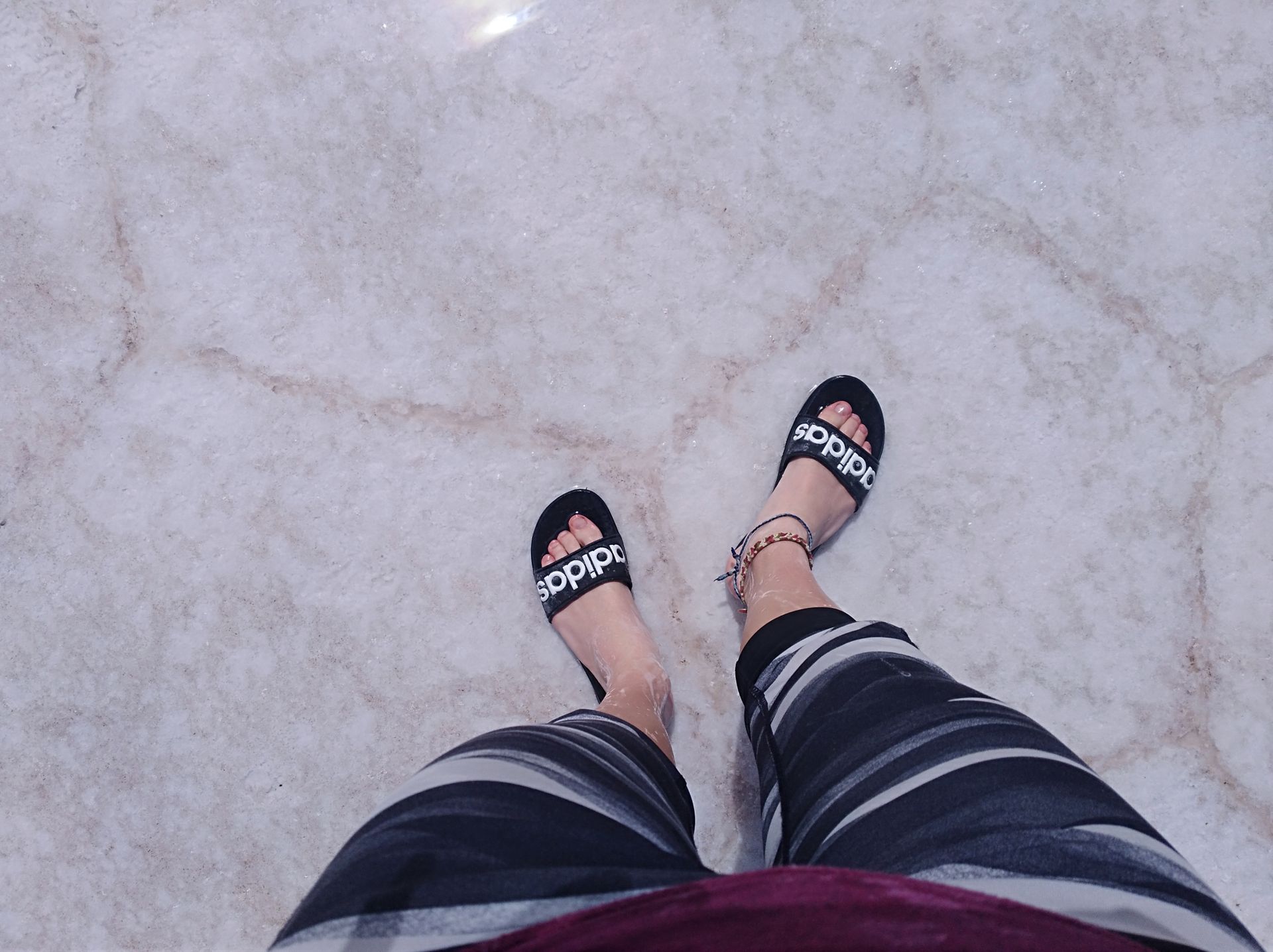
And then the sun timidly rises behind the clouds and suddenly I know why! The beauty of nature is boundless. The light film of water on the radiant white salt flat functions like a mirror. The orange, red, and yellow colors are everywhere and it's beautiful. The only reference point that you are still standing on the ground are small rocky elevations nearby. About 10 more jeeps are watching the spectacle with us. Everyone is busy taking photos.

After my feet have frozen a bit, we continue by car. We want to cross the desert once. The salt formations on the ground are constantly changing. Sometimes there are these mirror-smooth surfaces covered with water, then there are large salt rocks protruding from the surface or many small lumps forming funny patterns.
We pass many jeeps where people are taking photos in the funniest poses. I wonder when we will finally stop to take these photos because the clouds reflect beautifully in the water. But Diego firmly holds the steering wheel and drives on an unknown route without any reference points. I doze off a bit.
When I wake up, the sun is coming out from behind the clouds and I understand why Diego wanted to wait with the stop.

The mirrorland is even more impressive in the sunshine. Sometimes I can't tell the difference between the horizon and the ground. Simply weightless when the salt flat is mirror-smooth and covered with water.
Now, the famous photo spot. The two Brazilians are going all out. First photos with their two super smartphones. Then some drone flights for videos. Now they take out the 360-degree GoPro camera and also mount it on a wing for swinging. For me, as an absolute technophobe, that's really fascinating. I'm curious about the photos. The Brazilians keep teasing me that they will only send me the photos if I create an Instagram profile and share them with the world. I confirm with a smile on my face.
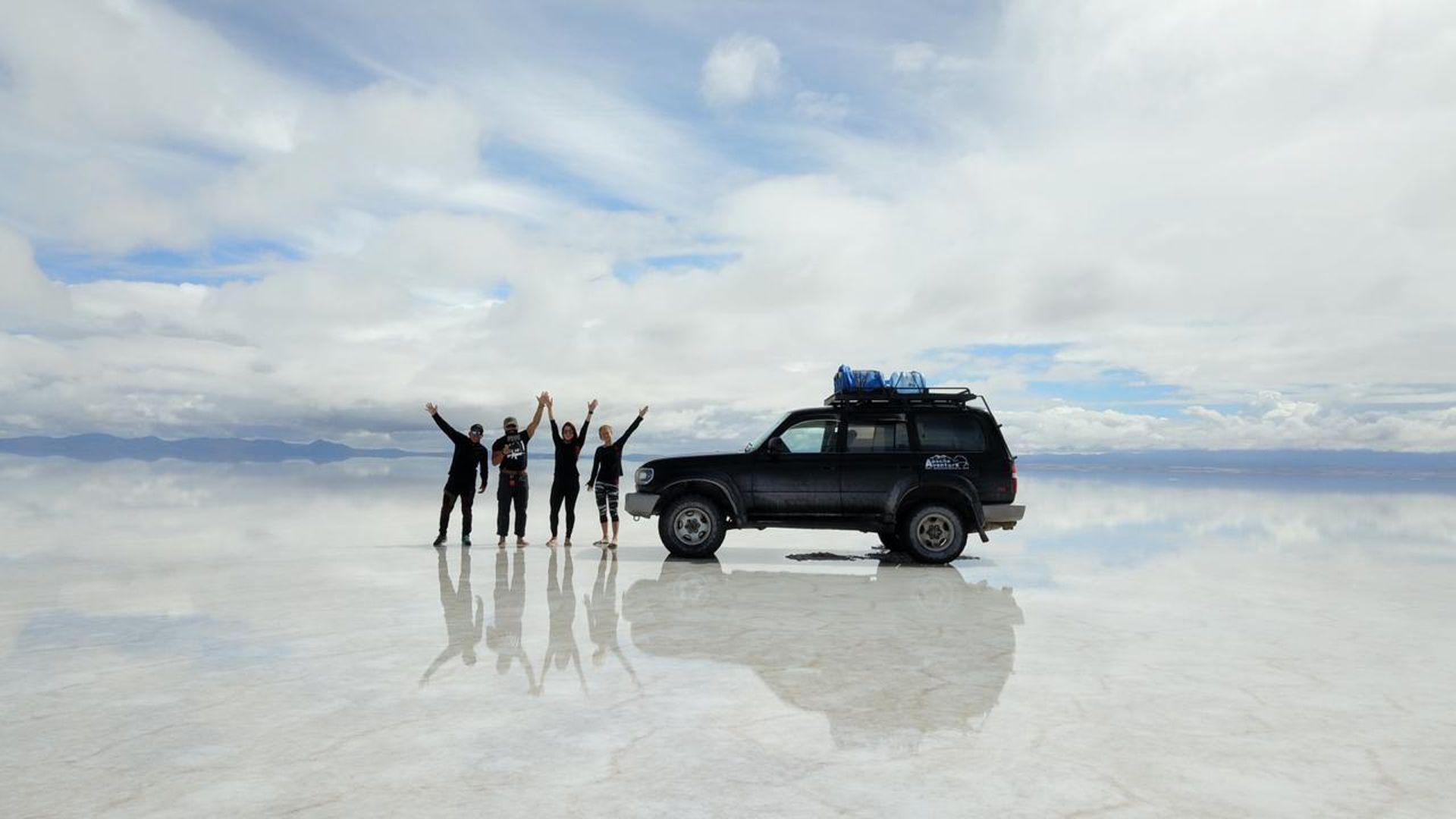
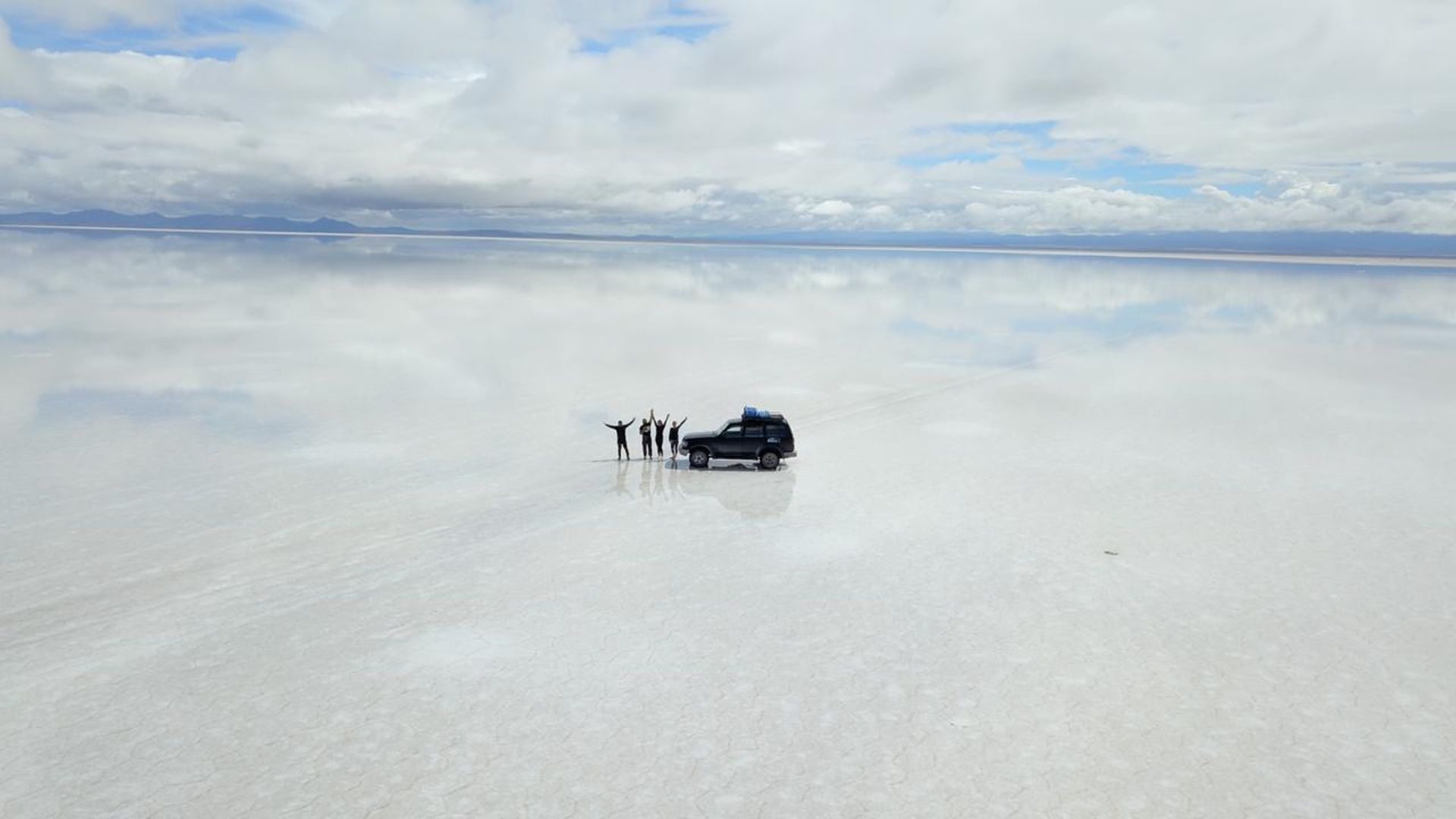
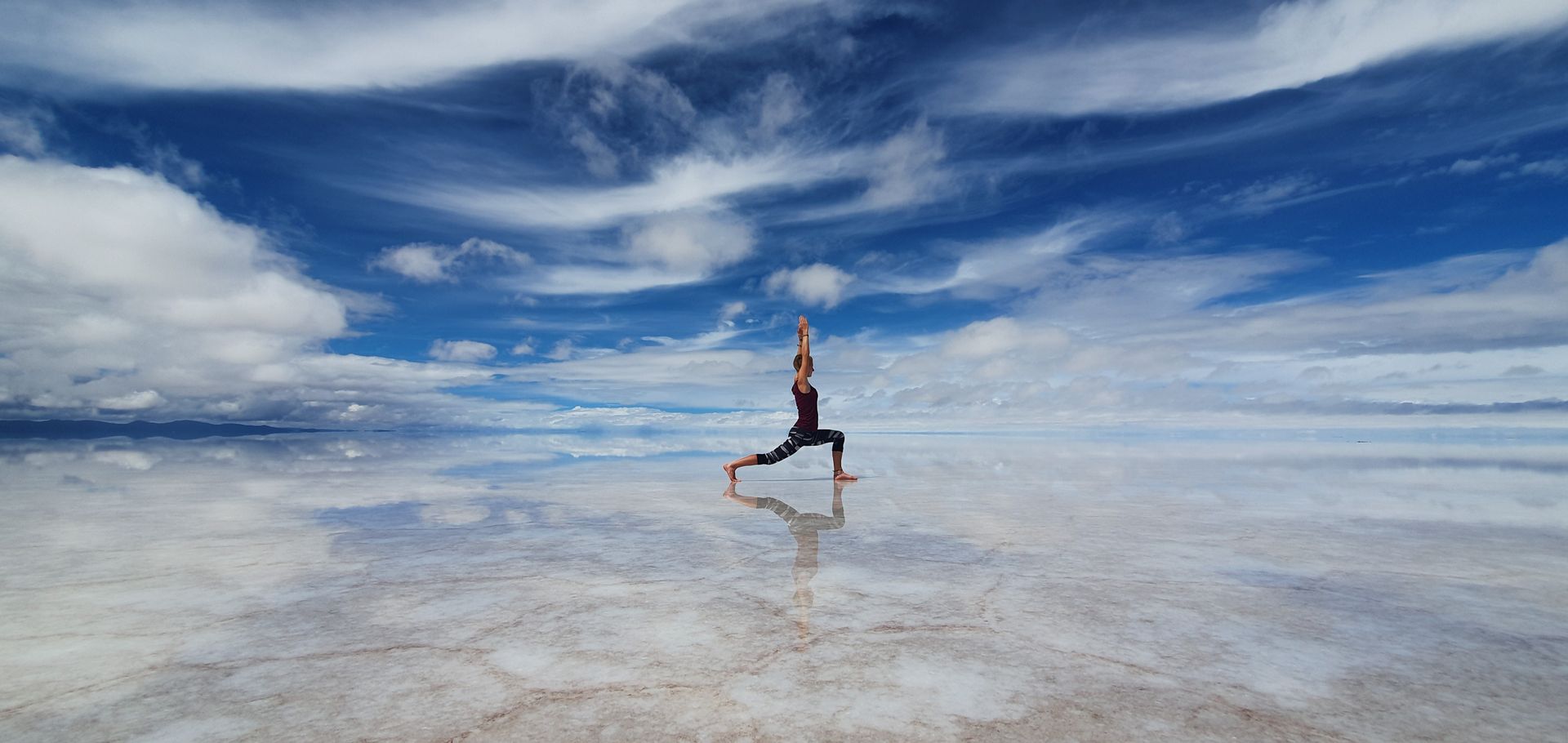
After the photoshoot, all of my clothes are covered in salt and my toenails are yellow?!? In any case, we cross the desert until we reach the 'Hotel de Sal'. That was the very first salt hotel and today it's only a museum. In front of it, there are many flagpoles with a variety of colorful flags. A funny splash of color in the middle of the white. Unfortunately, there is no German flag, but well, which German would think of just taking a flag with them to the Bolivian desert and hanging it there. My Brazilians are, of course, prepared and have a flag with them.
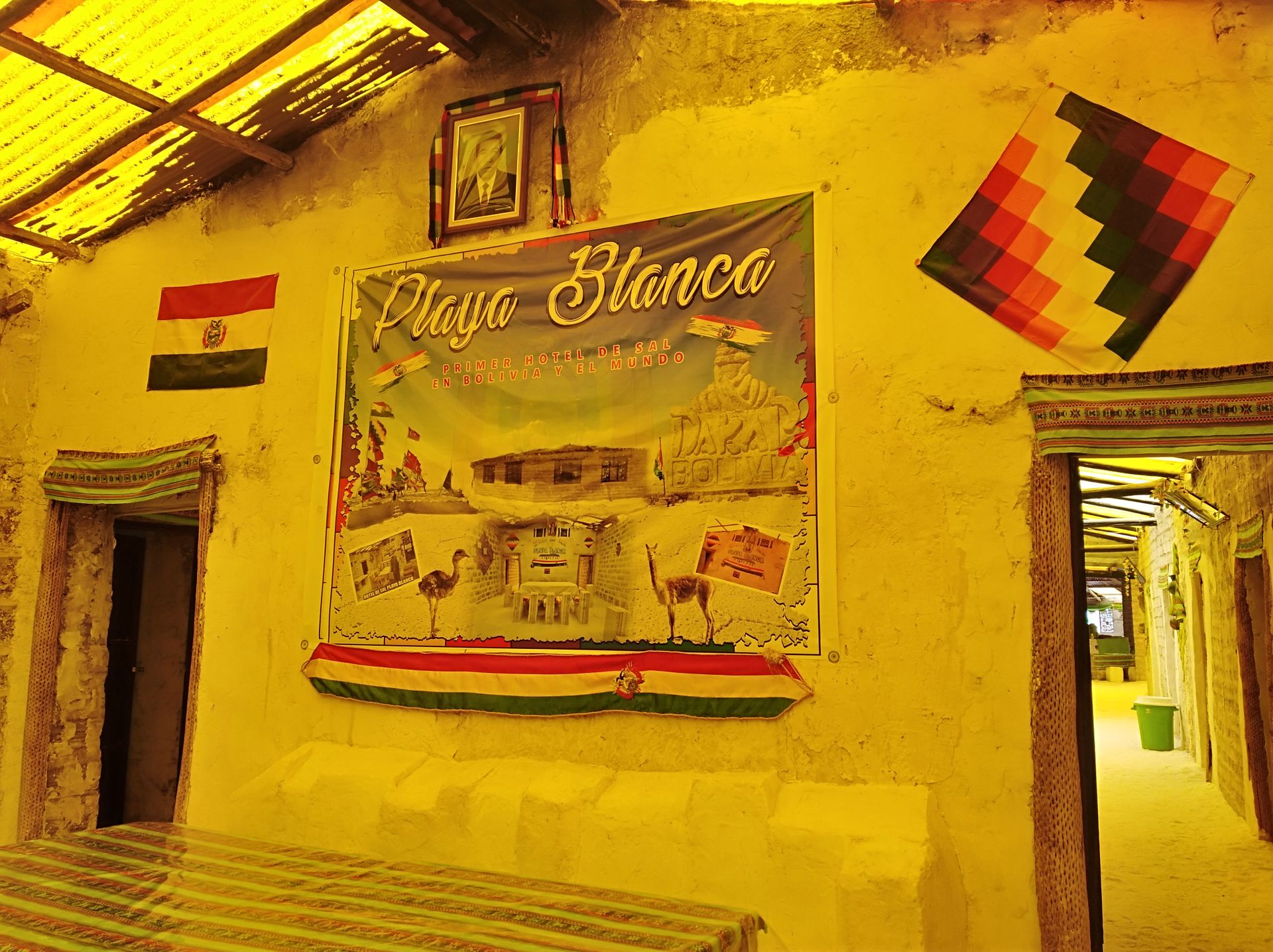
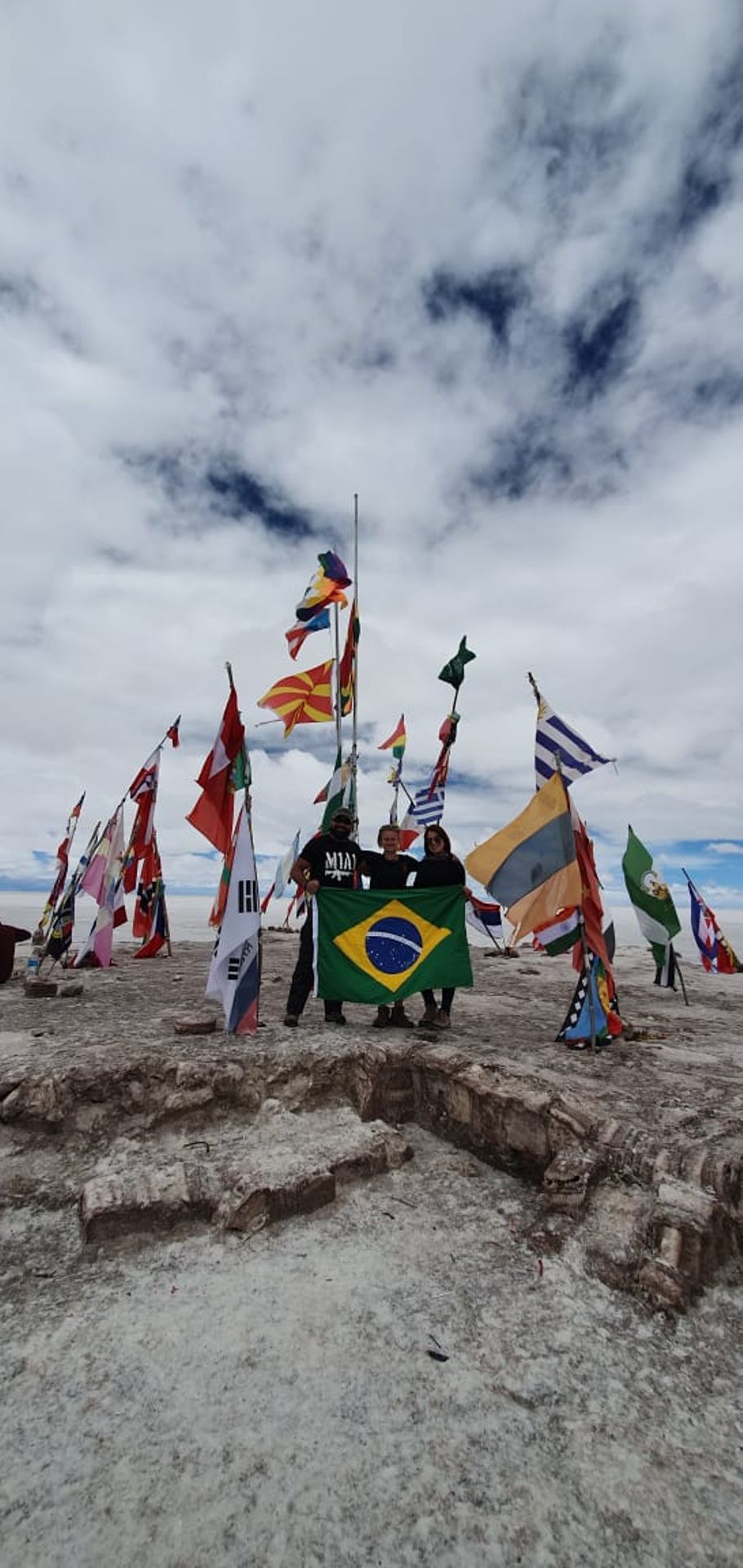
After that, we go to Colchane, where we make a stop for souvenir shopping. Then off to Uyuni for lunch. The city is also very ugly. Traditionally, we have quinoa with llama steak, which unfortunately was super dry and therefore not very tasty.
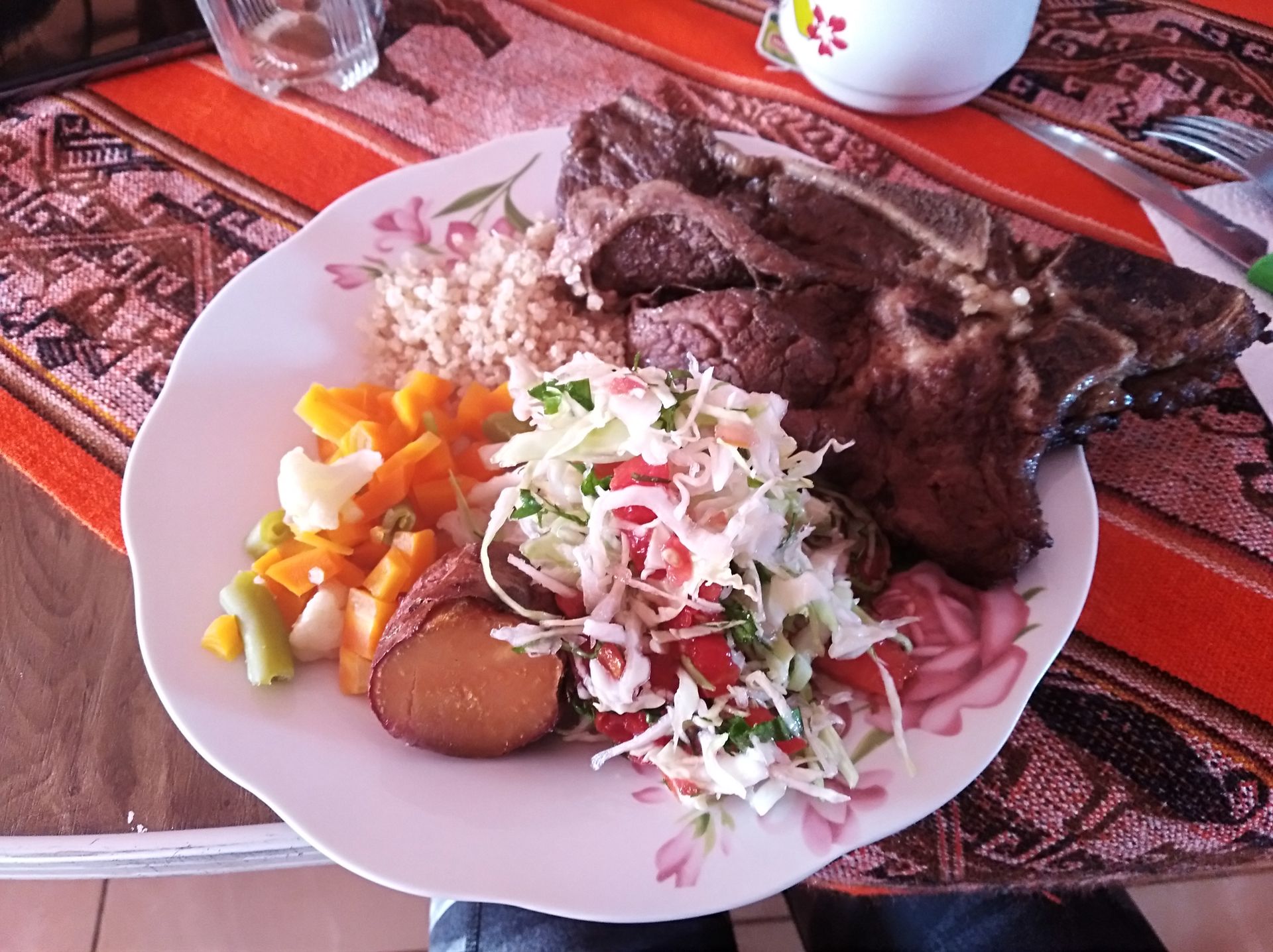
The final stop is the 'Cementerio de Trenes', a train cemetery. In the past, a lot of salt and lithium were transported on this railway line to Antofagasta in Chile. A good location for the last spectacular pictures of the trip.
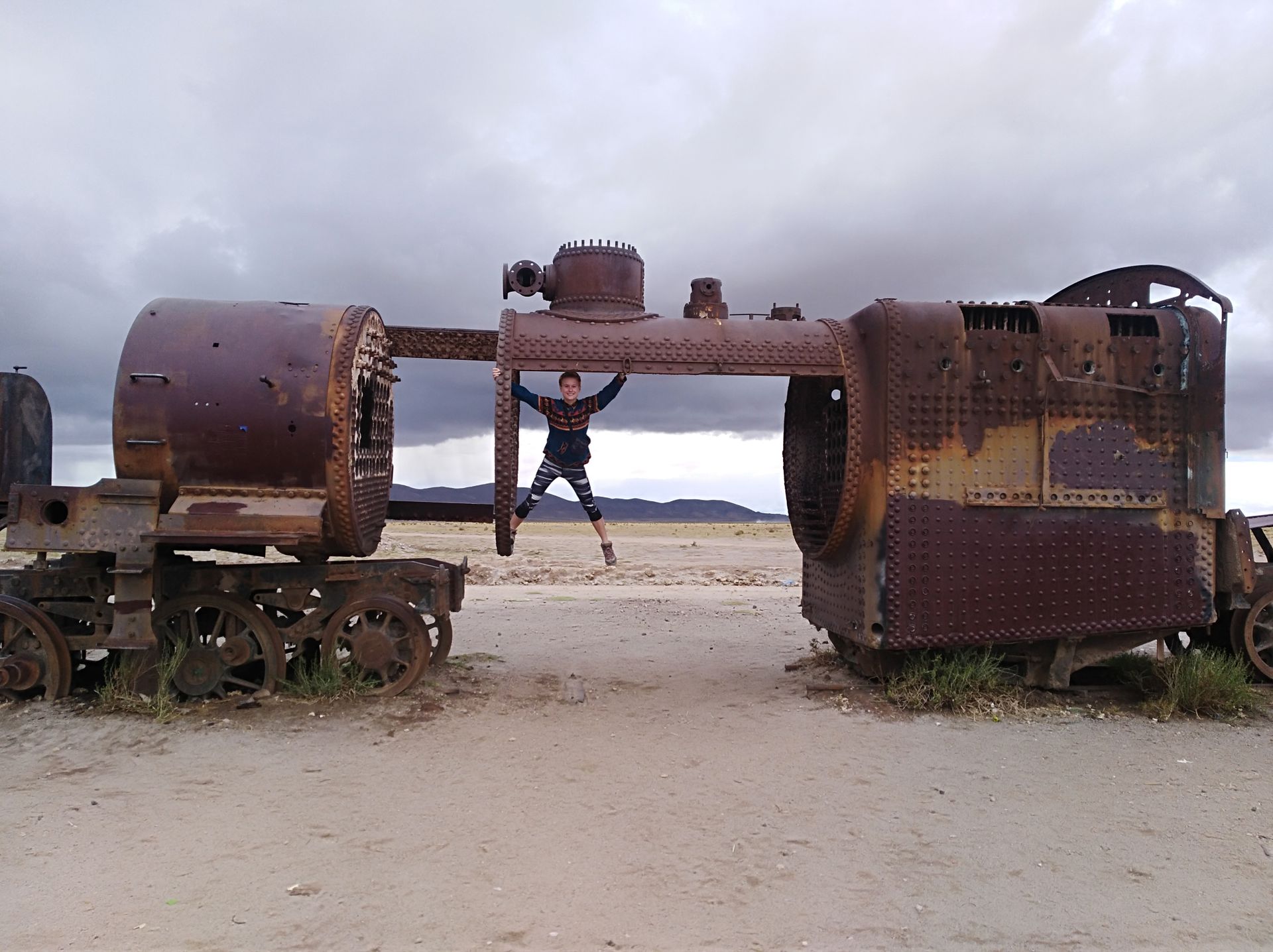
3:30 am, strangely enough, I am awake, my body is slowly getting used to waking up early, I don't know if that's healthy. I have probably seen every sunrise and sunset for a week in a row, that's pretty cool. Abel is driving fine, the car skids twice on the sandy path, but other than that, everything is calm. I have plenty of time to think during the three and a half hour drive to the border.
Damn - it's mid-January, in about a week I will be flying back. I'm somehow sad, but also curious how Germany will welcome me. At the border, it's another long wait, we can consider ourselves lucky to have the European Union. At 12, I will be in San Pedro and go have a good bean coffee (cafe de grano).
Can I recommend the four-day road trip to Salar de Uyuni?! 100%, it was unique, unforgettable, and incomparable to what you get to see here. It's worth giving up any luxury for it. Because, as I said, I got lucky that there were only three of us in the car. With 6 passengers, you sit like chickens on a perch in the vehicle at 35 degrees during the day, and you can't open the window because of the dust from the previous cars. So maybe ask for a jeep with fewer people. Otherwise: hostels and food are okay, drivers are friendly, what more do you need?
Frieda (January 15)
समाचार पत्रिका के लिए सदस्यता लें
उत्तर (1)
Sylke
Hey Frieda,
super coole Fotos. Hoffentlich sehen wir sie zu Hause dann etwas größer, du weißt unsere Augen sind nicht mehr die jüngsten. 😅
Wir freuen uns schon sehr dich gesund und munter in unsere Arme zuschließen.
Onkel Steffen & Tante Sylke 😘
यात्रा रिपोर्ट बोलीविया
